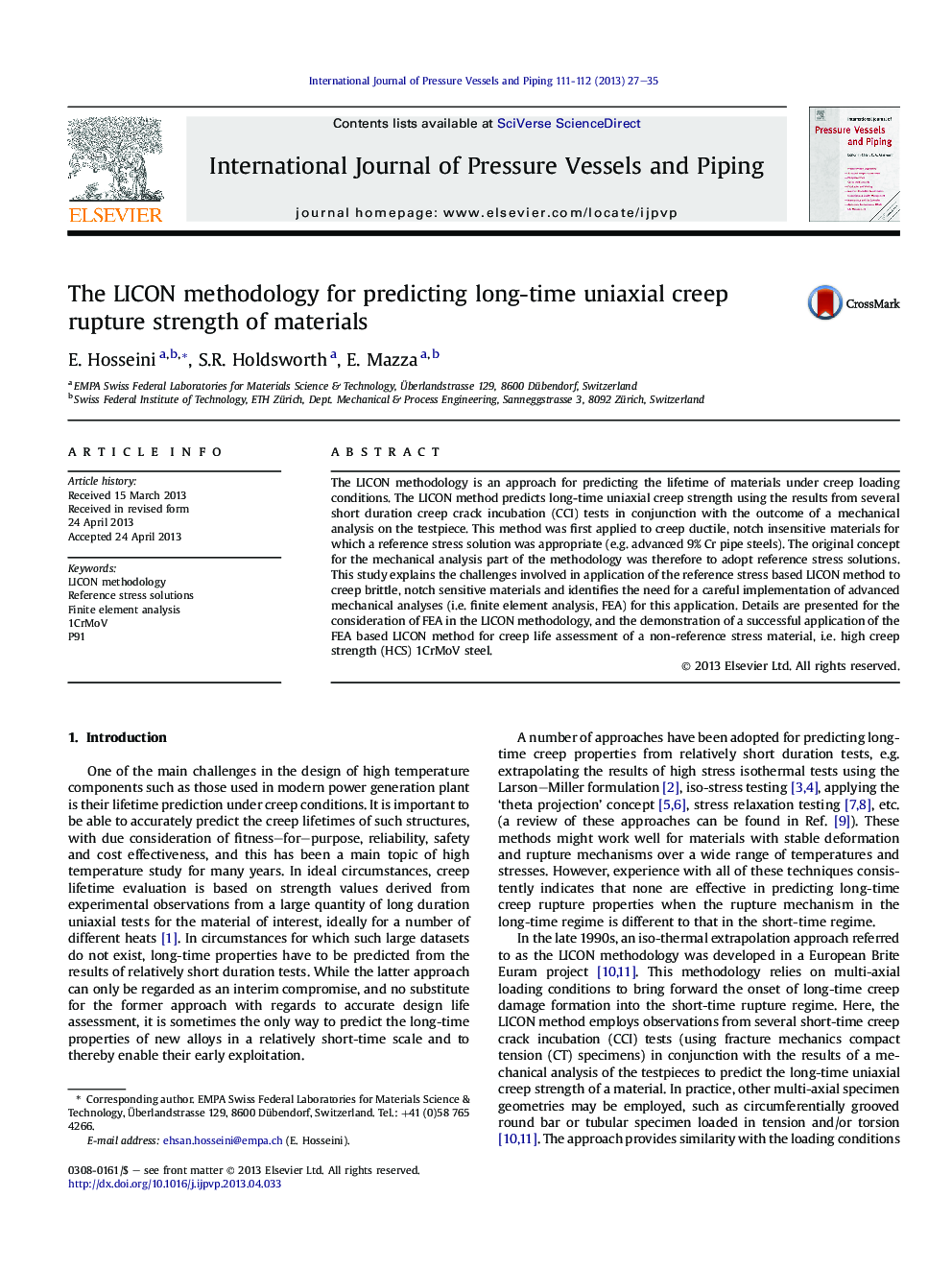| کد مقاله | کد نشریه | سال انتشار | مقاله انگلیسی | نسخه تمام متن |
|---|---|---|---|---|
| 785390 | 1466081 | 2013 | 9 صفحه PDF | دانلود رایگان |

• LICON predicts long term uniaxial creep strength from short term multiaxial tests.
• For creep brittle materials, procedure requires use of FEA.
• FEA for this application needs low stress creep rate data.
• Low stress creep rates are not available for new materials (challenge).
• Approximate low stress creep rates can be estimated with knowledge of yield point.
The LICON methodology is an approach for predicting the lifetime of materials under creep loading conditions. The LICON method predicts long-time uniaxial creep strength using the results from several short duration creep crack incubation (CCI) tests in conjunction with the outcome of a mechanical analysis on the testpiece. This method was first applied to creep ductile, notch insensitive materials for which a reference stress solution was appropriate (e.g. advanced 9% Cr pipe steels). The original concept for the mechanical analysis part of the methodology was therefore to adopt reference stress solutions. This study explains the challenges involved in application of the reference stress based LICON method to creep brittle, notch sensitive materials and identifies the need for a careful implementation of advanced mechanical analyses (i.e. finite element analysis, FEA) for this application. Details are presented for the consideration of FEA in the LICON methodology, and the demonstration of a successful application of the FEA based LICON method for creep life assessment of a non-reference stress material, i.e. high creep strength (HCS) 1CrMoV steel.
Journal: International Journal of Pressure Vessels and Piping - Volumes 111–112, November–December 2013, Pages 27–35